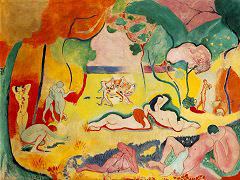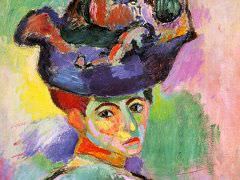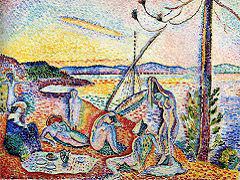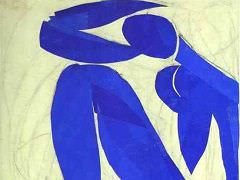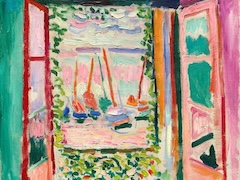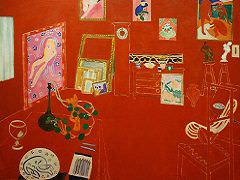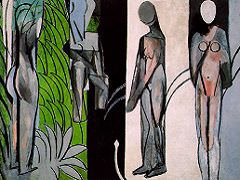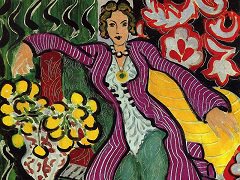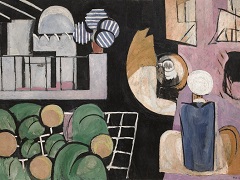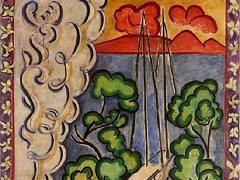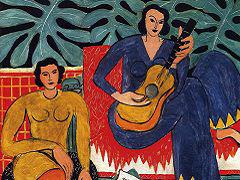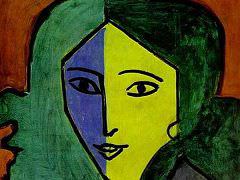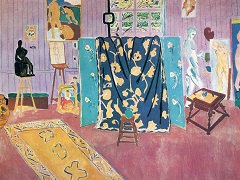Sorrow of the King, 1952 by Henri Matisse
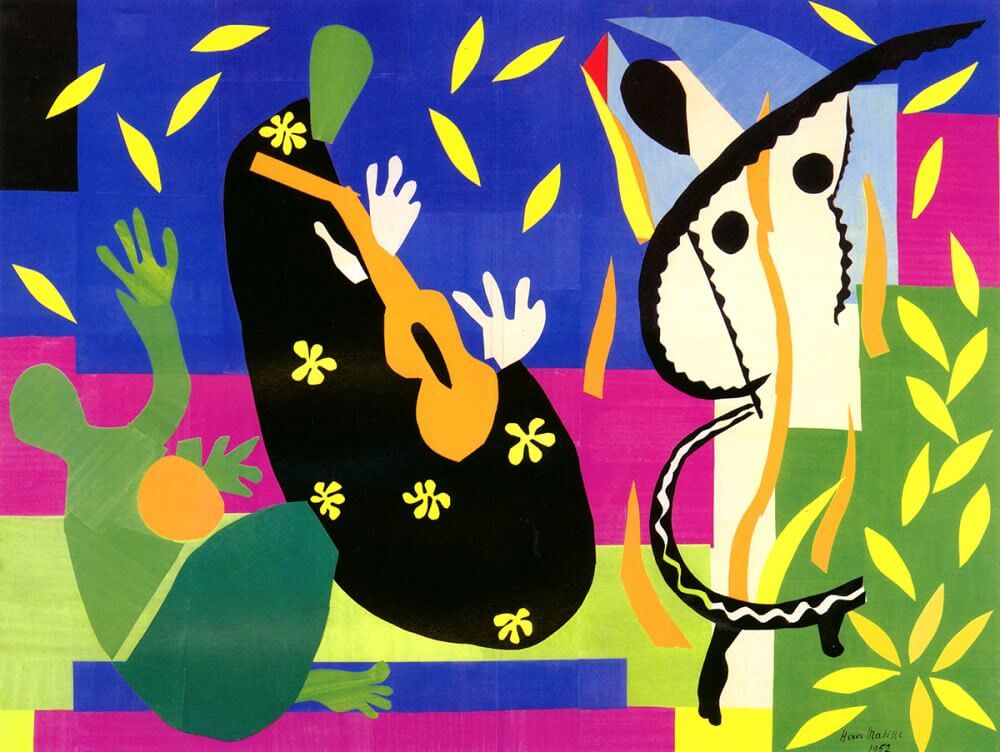
The Sorrows of the King was Matisse's final self portrait. This work refers to one of Rembrandt's paintings, David Playing the Harp before Saul, in which the young biblical hero plays to distract the king from his melancholy, as well as to Rembrandt's late self portraits. Here Matisse depicts the themes of old age, of looking back towards earlier life (La vie antérieure, the title of a poem by Baudelaire that Matisse had already illustrated) and of music soothing all cares.
Matisse has represented himself by the central black form, like a silhouette of himself sitting in his armchair, surrounded by the pleasures that have enriched his life. He has combined a number of recurring themes from his life. The yellow petals fluttering away have the gaiety of musical notation while the green odalisque symbolizes the Orient and a dancer pays homage to the female body and sensuousness.
Matisse's Sorrow of the King is an influential piece from near the end of his life. Many critics consider this to be his most innovative period. He had begun to experience severe arthritis and had a bout with cancer which forced him to be confined in a wheelchair. Instead of having his artistic talent dry up in the face of these challenges, Matisse was determined that he would keep doing his life's work as an artist. He could no longer stand to paint, so instead he created paintings with scissors by cutting pieces of colorful paper and gluing them onto larger pieces of paper with the help of his assistants. They were called 'gouaches découpés.' Sorrow of the King is a fine example of this style, with its use of stunning colors and shapes to create a scene.

